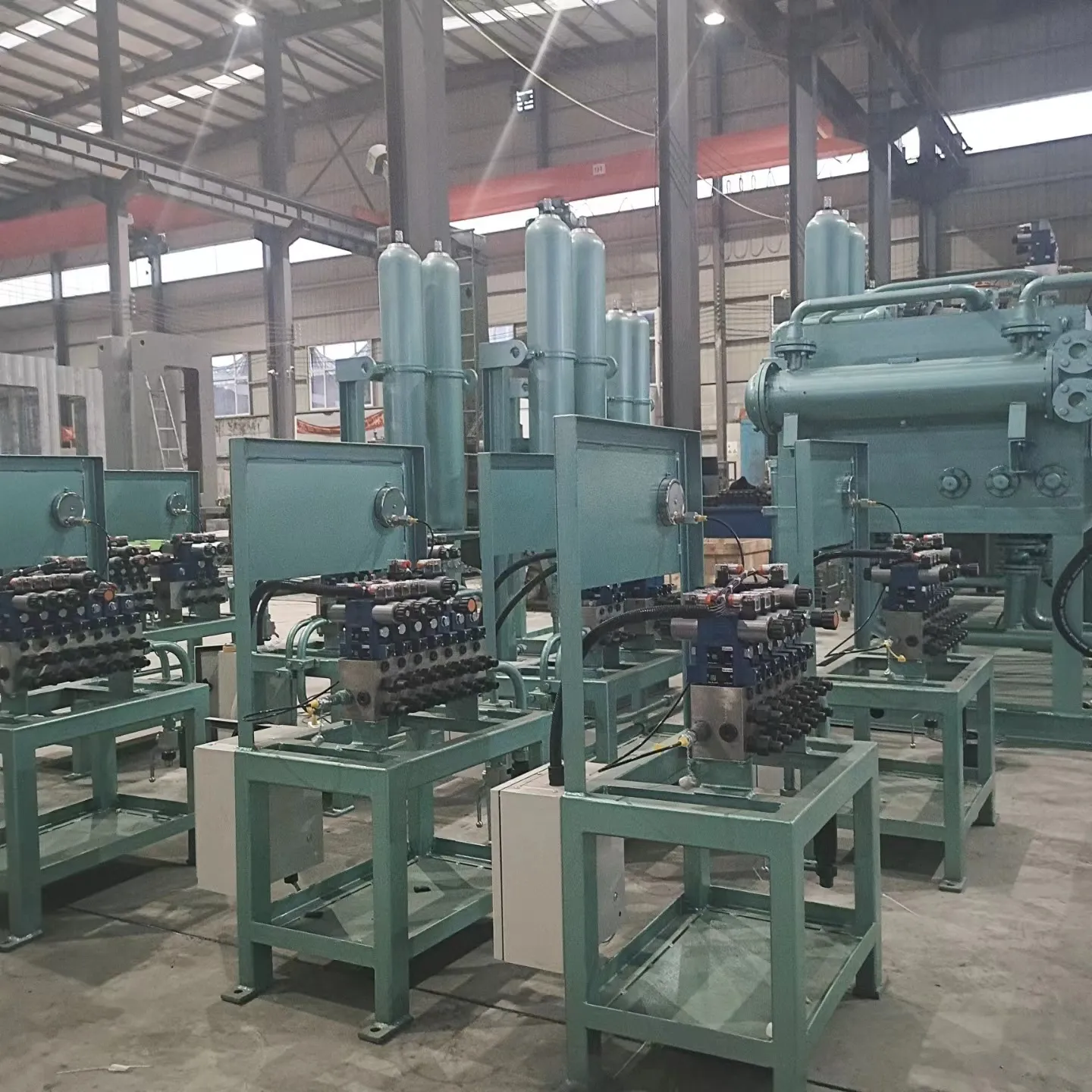
液压自动计量控制 (AGC) 系统的关键部件
- 自动厚度控制 (AGC) 系统对于需要精确且一致的材料厚度的行业(例如金属轧制、造纸和铝制造行业)至关重要。AGC 系统的主要功能是自动调整生产过程中辊之间的间隙或压力,确保将材料加工成所需的精确厚度。这些系统可提高生产效率和产品质量,同时减少人为干预和材料浪费。AGC 系统的核心是几个关键组件,它们无缝协作以实现这种精度。

液压执行器:仪表控制背后的驱动力
Hydraulic actuators are one of the most critical components of an AGC system, responsible for providing the necessary force to adjust the gap between rollers in response to varying material thickness. These actuators use hydraulic pressure to drive mechanical systems that control the position of rollers in real time. By converting hydraulic energy into mechanical motion, hydraulic actuators enable precise control over the material processing gap, ensuring uniform thickness across the entire width of the material.
The actuators are often connected to hydraulic pumps, valves, and accumulators to maintain constant pressure and adjust the roller gap as needed. The hydraulic actuators in AGC systems are typically designed for high durability and performance, as they operate under extremely high pressures and need to respond quickly to control signals. With their ability to apply large forces with high precision, hydraulic actuators form the backbone of the AGC system’s ability to maintain consistent material thickness.
为了实现高精度和高效率, AGC 系统机构 requires continuous monitoring of the material's thickness and the gap between rollers. Sensors play a crucial role in providing real-time feedback to the system, enabling it to adjust the roller gap automatically. Common types of sensors used in AGC systems include thickness sensors, position sensors, and pressure sensors.
Thickness sensors measure the material’s thickness as it passes between the rollers, while position sensors track the position of the rollers themselves. Pressure sensors monitor the hydraulic pressure in the actuators to ensure that the correct amount of force is being applied. The data gathered by these sensors is sent to the system's central controller, which uses it to make adjustments to the hydraulic actuators in real time.
By constantly feeding information about the material's thickness, roller gap, and hydraulic pressure, the sensors allow the AGC system to adjust and maintain the desired material specifications without manual intervention, ensuring high consistency and quality throughout the production process.
控制软件:AGC 系统背后的大脑
The control software is often referred to as the brain of the 自动厚度控制系统, as it processes all the information from the sensors and makes the necessary decisions to control the actuators. Using complex algorithms and data processing techniques, the control software continuously monitors material thickness, roller position, and hydraulic pressure, making precise adjustments to ensure optimal production conditions.
现代的 AGC 系统 通常包含复杂的反馈控制回路,控制软件根据传感器的实时数据调整执行器位置。系统还可能包括预测控制功能,使用历史数据和材料特性在需要之前预测调整。这提高了整个系统的响应能力和稳定性,减少了出错的可能性并提高了最终产品质量。
In addition to automatic adjustments, the control software also enables operators to manually override the system if needed. This feature provides flexibility, allowing human operators to intervene in case of unexpected conditions or to adjust settings based on specific production requirements.
自动压力控制:确保稳定施加力
在许多 AGC 系统中, 自动压力控制 是一项与其他组件协同工作的关键功能,确保滚轮在材料加工过程中施加正确的力。 自动压力控制 有助于维持液压系统中稳定一致的压力,这对于调整辊之间的间隙而不导致材料变形至关重要。
Pressure sensors continuously monitor the hydraulic system’s pressure levels, while the control software adjusts the pressure to match the required gap size. This prevents fluctuations in force application that could lead to inconsistent material thickness or even damage the rollers. The 自动压力控制 该功能可优化施加在材料上的力,确保生产过程高效而精确。
自动压力控制 该系统还能提高能源效率。通过仅在必要时调节液压,该系统可降低能耗、降低运营成本并延长液压部件的使用寿命。
集成与通信:AGC 系统的无缝运行
最后但同样重要的一点是 AGC 系统机构 is the integration and communication between all its components. The hydraulic actuators, sensors, control software, and automatic pressure control mechanisms must work together seamlessly to ensure smooth operation. This integration is typically achieved through industrial communication protocols such as Ethernet/IP, Modbus, or Profibus, which allow the various components to exchange data efficiently and in real time.
The communication network connects the sensors to the control software, enabling quick decision-making based on accurate, up-to-the-minute data. This enables the system to react to any changes in material thickness, roller position, or hydraulic pressure almost instantly, ensuring that the desired output is achieved consistently.
综上所述, 自动厚控 (AGC) 系统 relies on a sophisticated network of components to deliver precise and consistent material thickness. The hydraulic actuators provide the force needed for gap adjustment, while sensors offer real-time data on material thickness and system performance. The control software processes this data to make timely adjustments, and automatic pressure control ensures stable operation. Together, these components form a powerful system that boosts production efficiency and product quality, making it indispensable in industries where precision is paramount.
-
印度客户莅临 YWLX,验收5000KN光整机新闻Jun.22,2025
-
Typical Products from Reversing Cold Rolling Process新闻May.26,2025
-
Surface Finish Improvement through Skin Pass Rolling新闻May.26,2025
-
Integration of AGC Systems in Modern Cold Rolling Mills新闻May.26,2025
-
Cold Rolling in the Context of High-Strength Steel Demand新闻May.26,2025
-
AGC in Hot Rolling Mills: Challenges and Solutions新闻May.26,2025
-
Why Reversing Cold Rolling Mills Are Ideal for Specialty Metals新闻May.13,2025










